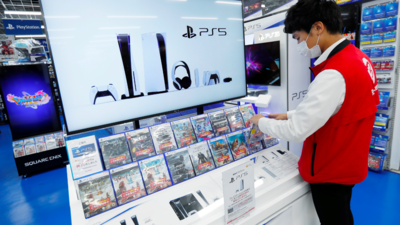Sony Interactive Entertainment (SIE) has unveiled plans for sizable reductions within its PlayStation gaming branch, cutting roughly 900 jobs globally. The layoffs, impacting close to 8% of gaming division staff, arrive alongside complete closure of SIE’s London game development studio.

Workers affected by the sweeping organizational changes will receive severance packages, according to official statements.
The news cements Sony’s gaming unit as the latest high-profile casualty during a wave of substantial layoffs and cost-cutting strikes across the video game industry in early 2024.
However, Sony cited a refocusing of resources and operations, rather than underlying financial duress, as the genesis of its restructuring strategy.
What Prompted Sony’s Move?
Industry analysts have pointed towards a strategic desire for Sony to reallocate human capital, streamline production pipelines, and reorient operations to address evolutions in user preferences and platform demand.
Specifically, the rise of mobile and cloud-based gaming is seen as a driving force behind the company’s push towards more agile development cycles and consolidated IP efforts.
“Sony appears to have taken a proactive, offensive step to align operations for current trends with an eye towards the future,” commented gaming industry strategist Jeetendr Sehdev.
“The layoffs, while certainly impactful for those losing jobs, are likely aimed at allowing Sony to place more resources behind new growth frontiers like its planned mobile controller and live services.”
Spanning Multiple Regions and Roles
Sony’s job cuts incorporate employees across geographical regions and a range of functions spanning game developers, software engineers, production crews, customer experience representatives, and corporate personnel.
Regions home to Sony studios and subsidiaries like Japan, North America, and Europe carry exposure to potential workforce impacts.

While the London studio closure clearly signals one primary reduction area, officials also confirmed cuts would occur across other Sony interactive entertainment branches.
Additional restructuring consequences include potential game delays as productivity ruptures during transitional phases tend to disrupt output timing.
Severance Offered to Those Impacted
Sony has positioned enhanced severance packages as a cornerstone element of its gaming realignment initiative. Workers displaced through project cancellations or regional studio shutdowns qualify for the dedicated severance program.
Offering details remain undisclosed, though precedents from previous gaming industry layoffs point to inclusion of lump sum payments, extended health coverage, job placement assistance, and other transitional support.
Though likely welcomed by affected employees, lucrative severance offerings hardly offset the sweeping implications of 900 lost jobs and associated training investments. The layoffs also drain institutional expertise from studios carefully built by Sony over decades of console development.
Why Are Layoffs Rocking the Broader Gaming Sector?
While Sony cites strategic imperatives rather than financial strain, the same can’t be said for some gaming peers enacting workforce cuts.
Industry mainstays like Epic Games, Unity, and Twitch Interactive have handed down pink slips by the thousands in 2024 as inflated pandemic-era budgets collide with slowing revenue growth.

Other layoff triggers range from disappointing earnings reports to duplicative positions arising after major mergers between large developers and publishers.
In virtually all cases, however, the recent job loss waves underscore a realignment towards leaner operations – especially as macroeconomic storm clouds gather on the horizon behind rising interest rates.
Impact on Game Creators and Marketing Talent
Given gaming’s hit-driven economics, the loss of hundreds of qualified game developers, engineers, and technical designers hampers creative throughput. For example, certain specialties like user acquisition marketers laid off after periods of aggressive hiring must now navigate reemployment searches without established venture capital funding channels.
Some analysts speculate the industry brain drain could have an outsized impact on the discovery and amplification potential for emerging gaming titles. This burdens smaller studios lacking the name recognition and marketing budgets to overcome crowded digital shelves.
Cloud Gaming’s Rising Tide
Cyclical contractions hardly overwrite gaming’s secular expansion in recent decades thanks to demographic tailwinds, mobile penetration, and most recently – adoption of cloud-based streaming alternatives removing hardware barriers.
In fact, cloud gaming platforms operated by Amazon, Google, Microsoft, Nvidia, and Sony itself represent a primary corporate focus towards reaching untapped consumer segments through instantly accessible services.
Gaming’s total addressable market could swell to $639 billion by 2030 according to McKinsey analysis as more users pay for premium content rather than pirate options.
PlayStation Leadership Sees Metaverse Future
Despite economic uncertainty plaguing peers, Sony leadership has touted ambitious plans to dominate interactive mediums of the future. “What the metaverse promises is the feeling that you have left where you physically are and are now playing inside a new world where the possibilities feel endless,” SIE CEO Jim Ryan commented in an interview last year.
Ryan envisions the PlayStation ecosystem evolving towards a portal connecting users across gaming titles and virtual environments using shared hardware, accessories, and account features. If achieved, Sony could entrench its position for decades by owning key layers of metaverse infrastructure.
Also Read: Samsung’s Galaxy Revolutionary Ring at MWC 2024











